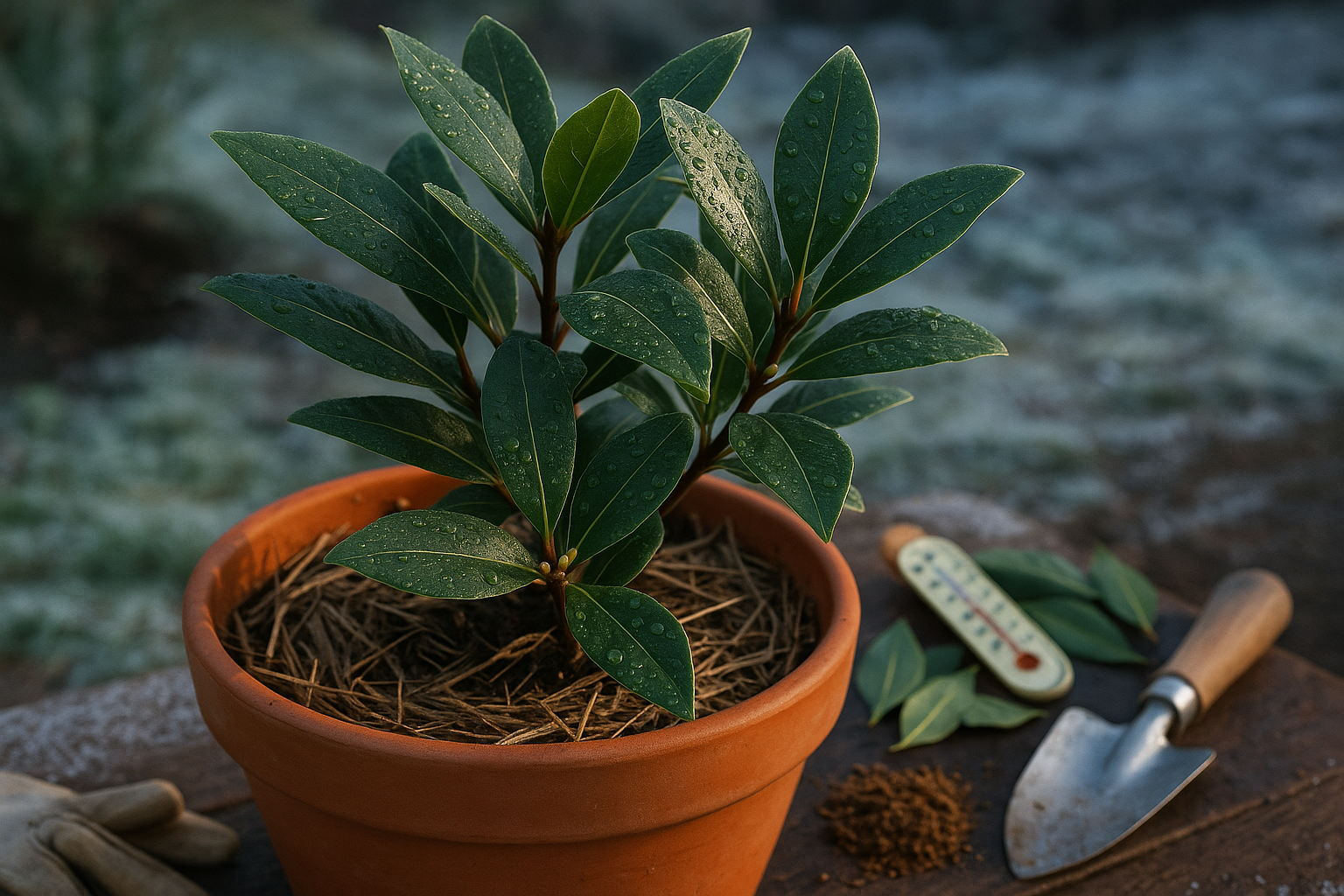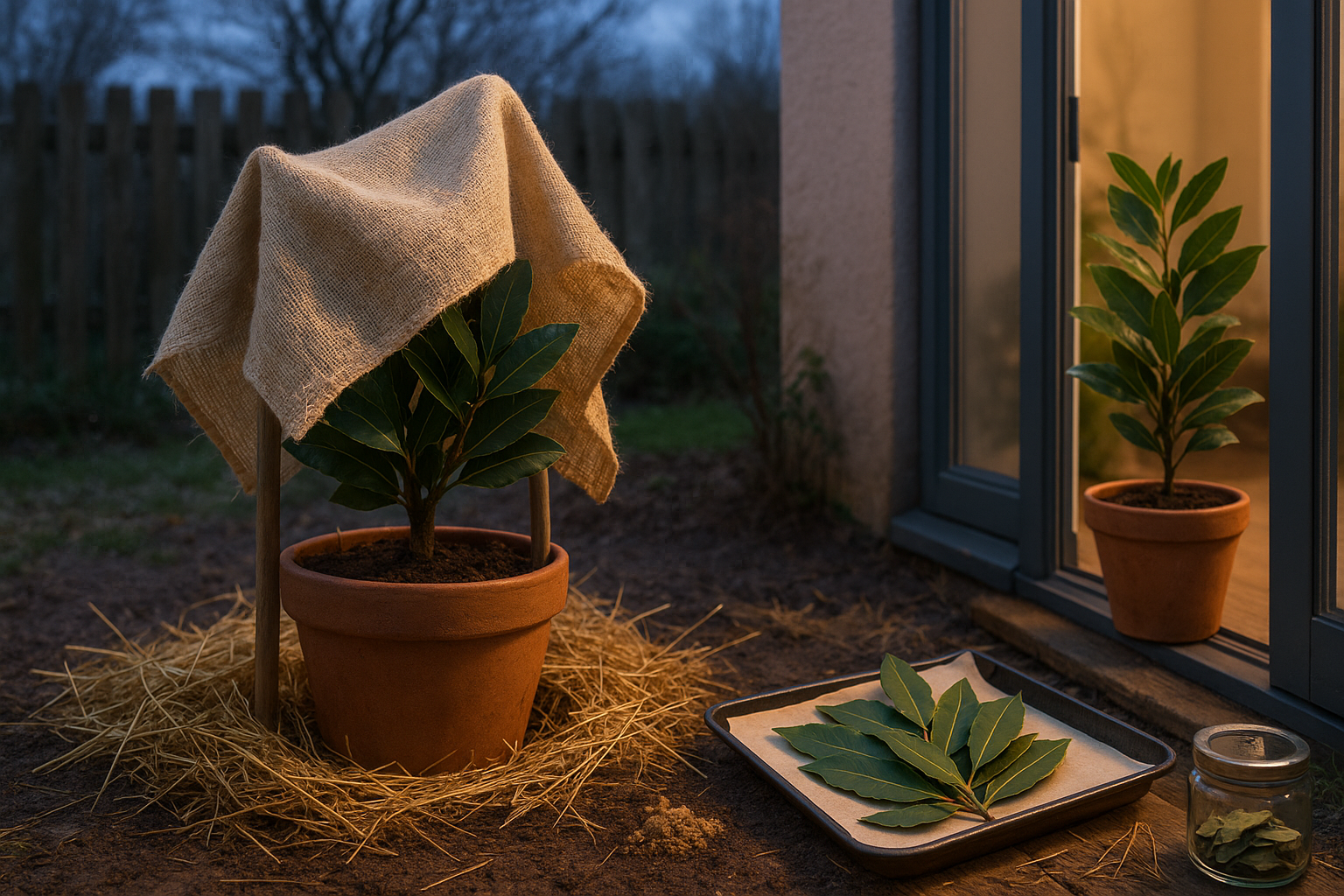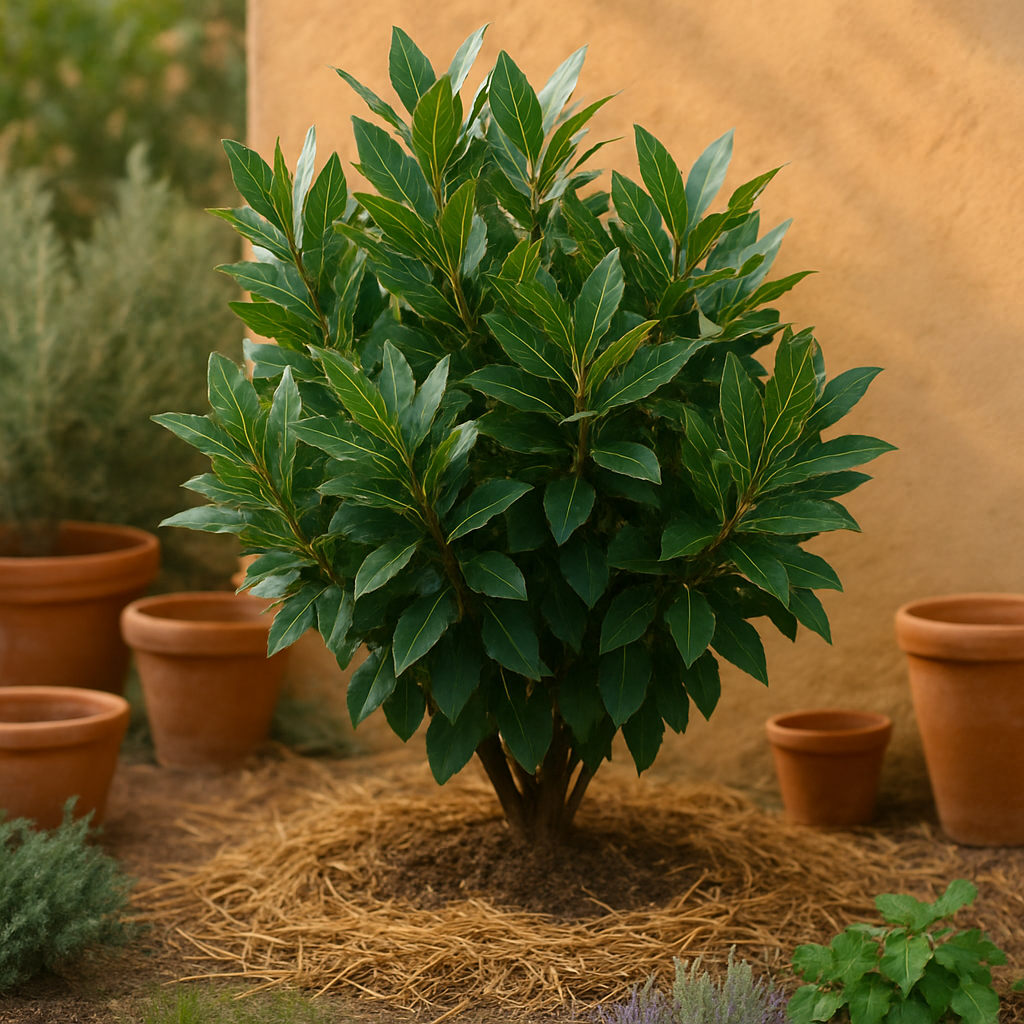Understanding Bay Laurel and Its Climate Needs

Bay laurel (Laurus nobilis), known for its aromatic leaves commonly used to flavor soups and stews, is a hardy evergreen shrub native to the Mediterranean. The region’s mild, wet winters and hot, dry summers provide ideal conditions for bay laurel, which thrives in USDA Hardiness Zones 8 to 10—covering much of the U.S. West Coast, the Deep South, and coastal areas.
However, gardeners in colder climates face real challenges growing bay laurel outdoors. This plant struggles when temperatures fall below freezing, as its leaves and branches are susceptible to frost damage. Generally, bay laurel can tolerate brief dips to around 20°F (-6°C), but extended exposure to colder temperatures can kill both the foliage and, in severe cases, the roots.
For those living in colder zones, consider growing bay laurel in containers that can be brought indoors or into an unheated garage during the coldest months. If you’re set on planting it outdoors, choose a sheltered, south-facing spot near a wall to provide extra warmth and protection. Mulching well around the base also helps insulate the roots.
With a bit of extra care, you can enjoy fresh bay leaves even where winter temperatures drop surprisingly low.
Choosing the Right Variety and Location
When growing bay laurel in colder climates, selecting a cold-tolerant variety like Laurus nobilis ‘Angustifolia’ or ‘Saratoga’ is a smart first step. These cultivars are generally more resilient to chilly temperatures and occasional frost, making them better suited for gardens outside traditional Mediterranean zones.
However, even hardy varieties need help during long, cold winters. Identifying a cozy microclimate in your yard—a spot sheltered from biting winds and with plenty of winter sun exposure—can extend your bay’s growing season. South-facing walls or corners shielded by fences or evergreens create just enough warmth and protection.
If you’re not sure your climate will cooperate, consider growing bay laurel in pots. Container-growing lets you move the plant to sunny patios in summer, then inside to a cool, bright room or an unheated garage during winter months. In contrast, garden beds allow larger, showier plants but limit your flexibility if severe weather threatens. For extra insurance, you can even sink a potted bay into the ground in spring, then lift it out to overwinter indoors.
Whichever you choose, be sure your spot gets at least six hours of direct sunlight daily—bay laurels won’t thrive without ample light. Finding the right variety and microclimate, and thinking ahead about whether to plant in pots or beds, sets your bay laurel up for years of fragrant harvests even in unpredictable weather.
Protecting Bay Leaf Plants from Frost

Protecting bay leaf plants from frost is essential for keeping them healthy through winter, especially in cooler climates where temperatures drop below freezing. Start by applying a thick layer of organic mulch, such as straw or shredded leaves, around the base of your plant in early fall. This helps insulate the roots and maintain a more stable soil temperature.
As temperatures fall, consider covering your bay leaf plant with frost cloths, burlap, or even old bedsheets on nights when frost is expected. For container-grown bay leaf plants, moving pots indoors before the first frost is an easy way to avoid cold damage—just place them in a sunny, south-facing window. Cold frames or mini greenhouses can also provide extra warmth for outdoor plants during chilly nights.
Wind Protection
Wind protection plays a crucial role in frost defense because cold winds can strip away warmth and worsen frost damage. Position your bay leaf near fences, walls, or hedges to create a natural windbreak, or set up temporary barriers using garden screens.
Start preparing in early fall by monitoring weather forecasts and being ready to cover and insulate your plants as soon as frost is predicted. Remember to keep an eye on soil moisture—drought-stressed plants are more vulnerable to cold.
By combining these methods—early mulching, physical coverings, wind protection, and bringing potted plants indoors—you give your bay leaf plants a much better chance of surviving winter unscathed.
Indoor and Overwintering Care
When colder months approach and nighttime temperatures consistently dip below 45°F (7°C), it’s time to move your bay plants indoors or into a greenhouse. Start by checking the plant for any pests—gently washing the leaves with water can help keep unwanted hitchhikers away.
Choose a spot with bright, indirect sunlight, such as a south-facing window. Bay laurel thrives with plenty of light but doesn’t tolerate harsh, direct rays indoors. If natural sunlight is limited, supplement with a grow light for 10–12 hours a day.
The ideal temperature for overwintering is between 50-65°F (10-18°C), and maintaining moderate humidity helps prevent crispy leaves. Place a tray of water with pebbles under the pot or run a small humidifier, especially if your home is dry from heating. Good air circulation is also important; use a fan set on low to discourage mold and fungal issues, but avoid placing the plant in drafty spots.
To minimize leaf drop—a common sign of stress—keep the soil slightly moist but never soggy, allowing the top inch to dry out between waterings. Avoid feeding the plant during winter, as new growth can be weak and vulnerable.
Rotate the pot every two weeks so all sides receive light, and resist the urge to move the plant around too much, as bay laurels adjust slowly to new environments. By creating these stable, suitable conditions, your bay laurel will overwinter successfully, ready to flourish again once it can return outdoors.
Winter Watering and Fertilizing Tips
As winter settles in, it’s important to adjust your plant care routine, especially when it comes to watering and fertilizing. Most indoor and outdoor plants enter a phase of slower growth or dormancy during the colder months, which means their water needs drop significantly.
Instead of sticking to your usual schedule, check the soil moisture by poking your finger about an inch deep—if it still feels damp, hold off on watering. Infrequent but thorough watering is better than giving a little water every few days. Overwatering is a common mistake that can quickly lead to root rot when the soil stays cold and soggy.
Keep in mind factors like reduced sunlight and lower indoor humidity, which slow evaporation. Plants often need water only half as often as they do in summer.
When it comes to fertilizing, it’s generally best to pause completely until spring. Extra nutrients aren’t helpful when plants aren’t actively growing and can stress them or cause salt buildup in the soil. If you have tropical or actively growing indoor varieties, you might apply a diluted liquid fertilizer once a month, but for most plants, it’s best to resist the urge.
By letting your plants rest and adjusting your care, you’ll set them up for healthy new growth when the days get longer.
Spring Recovery and Bay Leaf Maintenance
As spring arrives and temperatures steadily climb, it’s time to reacclimate your bay plant (Laurus nobilis) to outdoor life after its winter rest. Start by placing your bay in a sheltered spot outside, out of direct sunlight and strong winds, for a few hours each day. Gradually increase the exposure over 10-14 days. This slow adjustment helps prevent shock and sun-scorch on tender new leaves.
Once the risk of frost has passed, inspect your plant for winter damage. Prune away any brown or brittle stems, cutting just above healthy buds to stimulate fresh growth. Don’t be afraid to trim for shape or reduce size—bay plants respond well to pruning and will grow denser as a result.
As the plant wakes up, refresh the top inch of soil and resume regular watering, ensuring the pot drains well to avoid root rot. Spring’s warmth can also invite unwanted guests like aphids or scale insects. Inspect leaves regularly, washing pests away with a gentle spray of water or treating with insecticidal soap when needed.
By easing your bay gently into spring and staying alert to its needs, you’ll set the stage for vibrant, aromatic foliage all season long.
Troubleshooting Common Issues in Cold Climates
Cold climates can be tough on houseplants, often causing yellowing leaves, sudden leaf drop, root rot, and sluggish growth. If you notice yellow leaves, check for overwatering or drafts—move plants away from cold windows and let the soil dry out between waterings.
Leaf drop can be a response to shock from temperature swings or dry indoor air. Consider using a humidifier and avoid placing plants near vents or heaters.
Root rot usually results from poor drainage or excess moisture, especially in winter. Always use pots with drainage holes and well-draining soil, and empty any excess water from saucers.
Slow growth is normal during colder months as many plants go dormant. Don’t panic or over-fertilize—just reduce watering and resume feeding in spring.
If your plant’s roots are mushy, leaves keep dropping despite your efforts, or growth completely stops for months, it may be time to start fresh. Try propagating any healthy cuttings and consider replacing the plant if it continues to decline.
Remember, adapting your plant care routine to the changing seasons can make all the difference!
